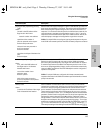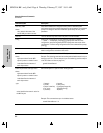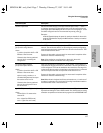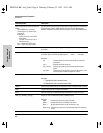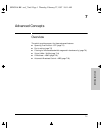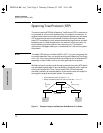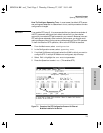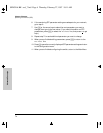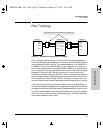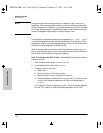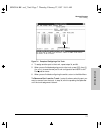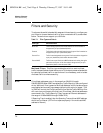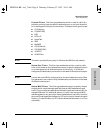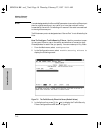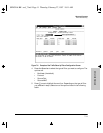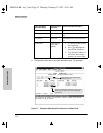
7-5
Advanced Concepts
Port Trunking
Advanced Concepts
Port Trunking
Figure 7-3. Conceptual Illustration of Port Trunking
Port trunking is used to allow up to four ports to be connected together to
function as a single, higher-speed port to connect to another Hewlett-Packard
switch designed for port trunking. This enables speeds of up to 400 Mbit/s in
a 100Base-T trunk. On the Switch 800T you can implement up to four port
trunks, and on the B-version of the Switch 2000 (J3100B), you can implement
up to six port trunks, which enables either switch to function as a high-speed
backbone. (The Switch 800T actually allows up to six port trunks to be
configured. However, because by definition, a port trunk requires at least two
ports, the eight-port Switch 800T physically allows a maximum of four trunks.)
The A-version of the Switch 2000—J3100A—allows only one port trunk, but
can be trunked to other Hewlett-Packard switches that support port trunking.
Traffic distribution over the trunk ports is determined when packets arrive
with new source MAC addresses. Each new address is assigned to a trunk port
in a sequential way that distributes the source addresses evenly over the trunk.
The switch sends broadcast, multicast, and flooded traffic over only one port
within the trunk in order to prevent a broadcast loop. (The switch automati-
cally determines which port to use.)
Switch 1 Switch 2
The multiple ports in a trunk behave as one logical port
port a port w
port b port x
port c port y
... port z
port
n ...
port n
port 1
port 2
port 3
...
port
n
port 5
port 6
port 7
port 8
...
port
n
Switch 3
SEDONA.BK : sed_7.fm5 Page 5 Thursday, February 27, 1997 10:11 AM



